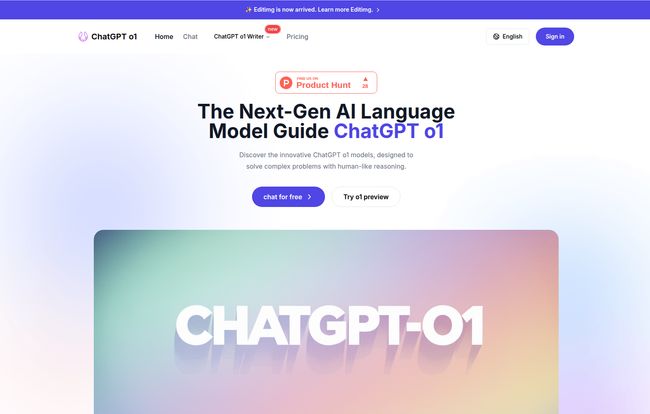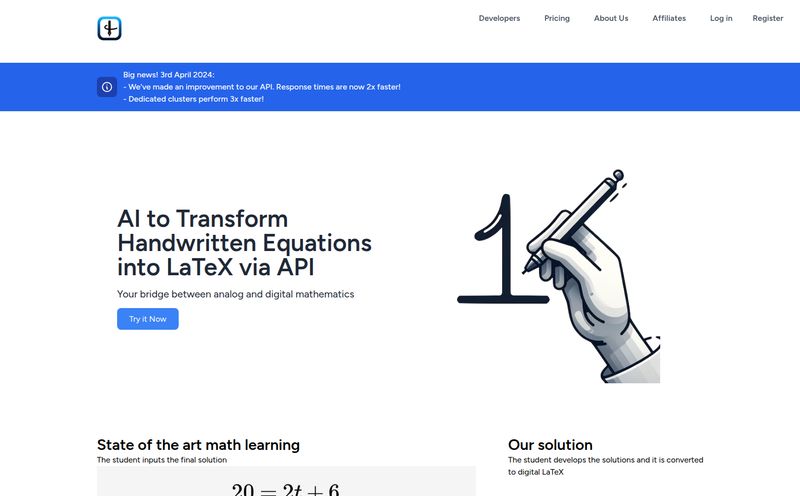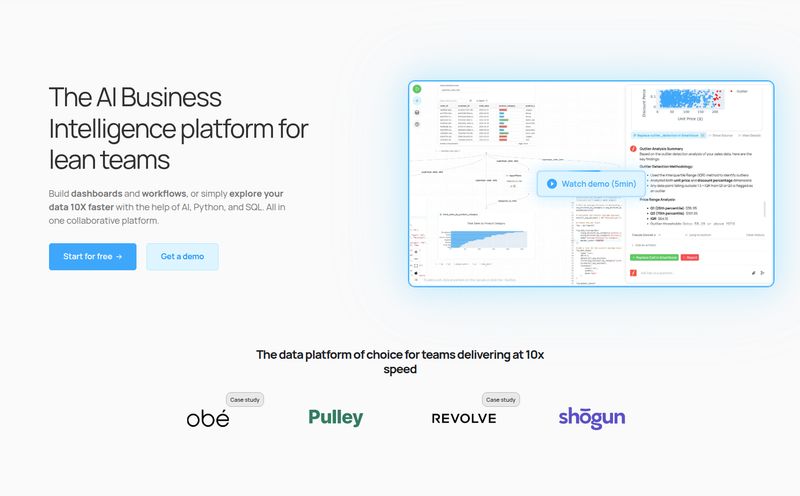If you’re in the digital space like me, you’ve probably got AI fatigue. It feels like every single week there’s a new “revolutionary” model that’s going to change everything. Claude 3, Gemini 1.5, GPT-4o… it’s a constant stream of updates, and honestly, it’s exhausting trying to keep up. Most of the time, the changes are incremental. A little faster here, a bit better at poetry there. Yawn.
But every now and then, something comes along that feels… different. Something that isn’t just a bigger, broader version of what we already have, but a sharper, more specialized tool. That’s the feeling I’m getting from the new kid on the block: ChatGPT o1. I’ve been messing around with it, and it’s not your average chatbot. This thing is a thinker.
So, What Exactly is This ChatGPT o1 Thing?
In the simplest terms, ChatGPT o1 is OpenAI's latest attempt at creating an AI that doesn't just spit back information it's learned, but actually reasons its way through a problem. Think of it like this: most AIs are like a student who has memorized the entire textbook. They can answer any question in the book perfectly. Impressive, right? But o1 is more like the professor who wrote the textbook. It can tackle problems that aren't in the book, connecting dots and figuring things out from first principles.
It achieves this through a process called reinforcement learning, which basically means it refines its own thinking process over time. It’s designed to handle complexity, the kind of stuff that makes other models stumble and give you those weird, nonsensical answers. We’re talking about complex math, high-level programming logic, and tricky scientific concepts.
The “o1” Lineup: Not a One-Size-Fits-All Model
OpenAI didn't just drop one model on us. They gave us a couple of flavors, which I actually appreciate. It shows they understand that not every task requires a sledgehammer.

Visit ChatGPT o1
The Heavy Hitter: o1-Preview
This is the flagship, the main event. o1-Preview is the powerhouse designed for the really gnarly stuff. If you're a developer trying to debug a recursive function from hell or a researcher modeling complex data, this is the one you’ll want to reach for. The folks at OpenAI also say it’s been trained with new safety methods, which is always good to hear. We need these systems to be not just smart, but also aligned with, you know, not going off the rails. It’s the brainy, deliberate one.
The Speedy Sidekick: o1-Mini
Then you have o1-Mini. I think of this one as the quick-witted intern. It’s fast, cost-effective, and really good at tasks that require efficient reasoning but don't need a deep well of world knowledge. Think real-time customer support bots that need to follow a complex logic tree, or applications that need to generate structured data on the fly. It's not going to write a philosophical treatise for you, but for fast, logical operations, it’s brilliant. It's built for speed and efficiency.
How Does o1 Stack Up? A Look at the Numbers (Without the Headache)
Okay, numbers. Benchmarks. I know, your eyes are glazing over. But stick with me, because this is where it gets interesting. The homepage for o1 has a table comparing it to the mighty GPT-4o, and the results are pretty telling.
I won’t bore you by listing every single score, but let's look at a few that matter. On a benchmark called HumanEval, which tests coding ability, o1 scores 94.4 to GPT-4o’s 90.2. That's a significant jump. For a coder, that's the difference between an AI that mostly gets it right and one that writes clean, functional code more reliably. Another big one is MATH (pretty self-explanatory), where o1 hits 78.2 versus GPT-4o's 73.0. Again, a noticeable improvement on problems that require multiple steps of logic.
"It’s not just about getting a higher score; it’s about what that score represents. It represents a deeper capacity for logical deduction, something that has been a huge hurdle for large language models."
Now, here's the crucial part some people might miss: GPT-4o still clobbers o1 on tasks that are not reasoning-heavy. And that's okay! It’s all about using the right tool for the job. You wouldn't use a delicate scalpel to chop down a tree. For writing a quick email or summarizing a news article, GPT-4o is still your go-to. But for the heavy lifting? o1 is the new contender.
Putting It to Work: Where ChatGPT o1 Really Shines
So, beyond the benchmarks, where would a normal person, or at least a professional like me, actually use this?
- Advanced Coding and Debugging: I’ve thrown some tricky Python scripts at it, ones with subtle bugs that would take me a good 20 minutes and a pot of coffee to find. o1-Preview found them and explained the logic behind the fix. That alone is worth its weight in gold.
- Strategy and System Design: For my SEO work, I often build complex content strategies with branching topics and keyword clusters. I used o1 to help me map out a logical architecture for a huge client website, and it suggested connections and structures I hadn't considered. It was like having a very smart, very fast strategic partner.
- Education and Research: If you’re a student struggling with advanced calculus or a researcher trying to make sense of dense academic papers, this tool could be incredible. It doesn't just give you the answer; it can break down the how and the why.
The site talks about “Limitless Creative Potential,” and while I'm a bit skeptical of marketing-speak, I can see it. Not for writing a sonnet, perhaps, but for building the intricate rules of a fantasy world or plotting a complex mystery novel. Tasks that require a foundation of logic and consistency.
Let's Talk Money: The ChatGPT o1 Pricing Plans
Okay, the big question. What’s this going to cost me? The pricing structure is actually pretty reasonable and tiered, which I like. It’s not some enterprise-only monolith.
| Plan | Price | Key Features |
|---|---|---|
| Free | $0 / month | Access to Free Chat and o1 Writer. A great way to test the waters. |
| Basic | $9.99 / month | Access all models, 300 o1-Mini & 30 o1-Preview queries, chat history. |
| Pro | $19.99 / month | Increases limits to 600 o1-Mini & 60 o1-Preview queries. |
| Premium | $29.99 / month | Generous limits with 1000 o1-Mini & 100 o1-Preview queries. |
| Max | $49.99 / month | For heavy users: 2000 o1-Mini & 200 o1-Preview queries. |
In my opinion, the Basic plan at $9.99 is the sweet spot for most curious professionals. The 30 Preview queries are enough to see if it can handle your specific complex problems before you commit to a higher tier. The free plan is fine, but you won't get a real sense of o1's power without trying the preview model.
My Honest Take: Is ChatGPT o1 Worth the Hype?
So, here’s my final thought. Yes, I think this one is worth paying attention to. The reason is its focus. It’s not trying to be the AI that does everything. Instead, it’s aiming to be the AI that thinks better. And in my line of work, and for so many other technical and scientific fields, that’s the real bottleneck we've been facing.
It's not perfect. The query limits on the lower-tier plans for the Preview model feel a bit tight, and you can burn through them quickly if you're working on something really tough. But it’s a strategic choice on their part, I get it. This kind of computation isn't cheap.
Ultimately, ChatGPT o1 feels less like a replacement for other AIs and more like a new, specialized instrument in the orchestra. You'll still use GPT-4o for your day-to-day writing and summarization. But when you hit a wall, a real brain-buster of a problem, o1 is the one you’ll be glad to have in your toolbox. It’s a step in a very interesting direction for AI—not just bigger, but smarter.
Your ChatGPT o1 Questions, Answered
I've seen a few questions pop up, so let's tackle them head-on.
Is there a free trial for ChatGPT o1?
Yes, there is! The 'Free' plan costs $0/month and gives you access to the basic chat and the ChatGPT o1 Writer. It's a great way to get a feel for the platform before committing to a paid plan that unlocks the more powerful models.
What's the main difference between o1-Preview and o1-Mini?
Think of it as power vs. speed. o1-Preview is the powerhouse model designed for maximum reasoning on very complex tasks like advanced math or coding. o1-Mini is optimized for speed and cost-efficiency on tasks that require quick, logical responses but not necessarily a deep understanding of the world.
Can I use ChatGPT o1 for simple tasks like writing emails?
You could, but it wouldn’t be the best use of the tool. It's a bit like using a Formula 1 car to go grocery shopping. Models like GPT-4o (which is included in the paid plans) are better suited and more efficient for everyday creative and administrative tasks.
How is o1 different from the regular ChatGPT I'm used to?
The main difference is the focus on 'reasoning'. While the regular ChatGPT is excellent at retrieving information and generating fluent text, o1 is specifically engineered to 'think' its way through problems step-by-step. It excels at logic, making it superior for tasks that require deduction rather than just knowledge recall.
What kind of safety features does o1 have?
According to the information available, o1 has been trained with new, advanced safety methods. This is meant to ensure it adheres more strictly to safety guidelines and alignment protocols, reducing the likelihood of generating harmful, biased, or unsafe content, especially when dealing with complex or sensitive topics.
The Next Chapter in AI Reasoning
Wrapping this up, ChatGPT o1 feels like a significant marker. It's a move away from the 'bigger is better' mentality and toward a more mature understanding that different problems require different kinds of intelligence. We're getting specialized tools, and that's a sign of a field that's truly advancing. For anyone whose job involves solving complex problems, this is a development you'll want to watch very, very closely. The age of the AI reasoning engine is here, and it’s going to be fascinating to see what we build with it.
Reference and Sources
- Official ChatGPT o1 Product Page
- TechCrunch: OpenAI Announces o1, A New Model Focused on Complex Reasoning
- arXiv: Advancements in Reinforcement Learning for Language Model Reasoning



